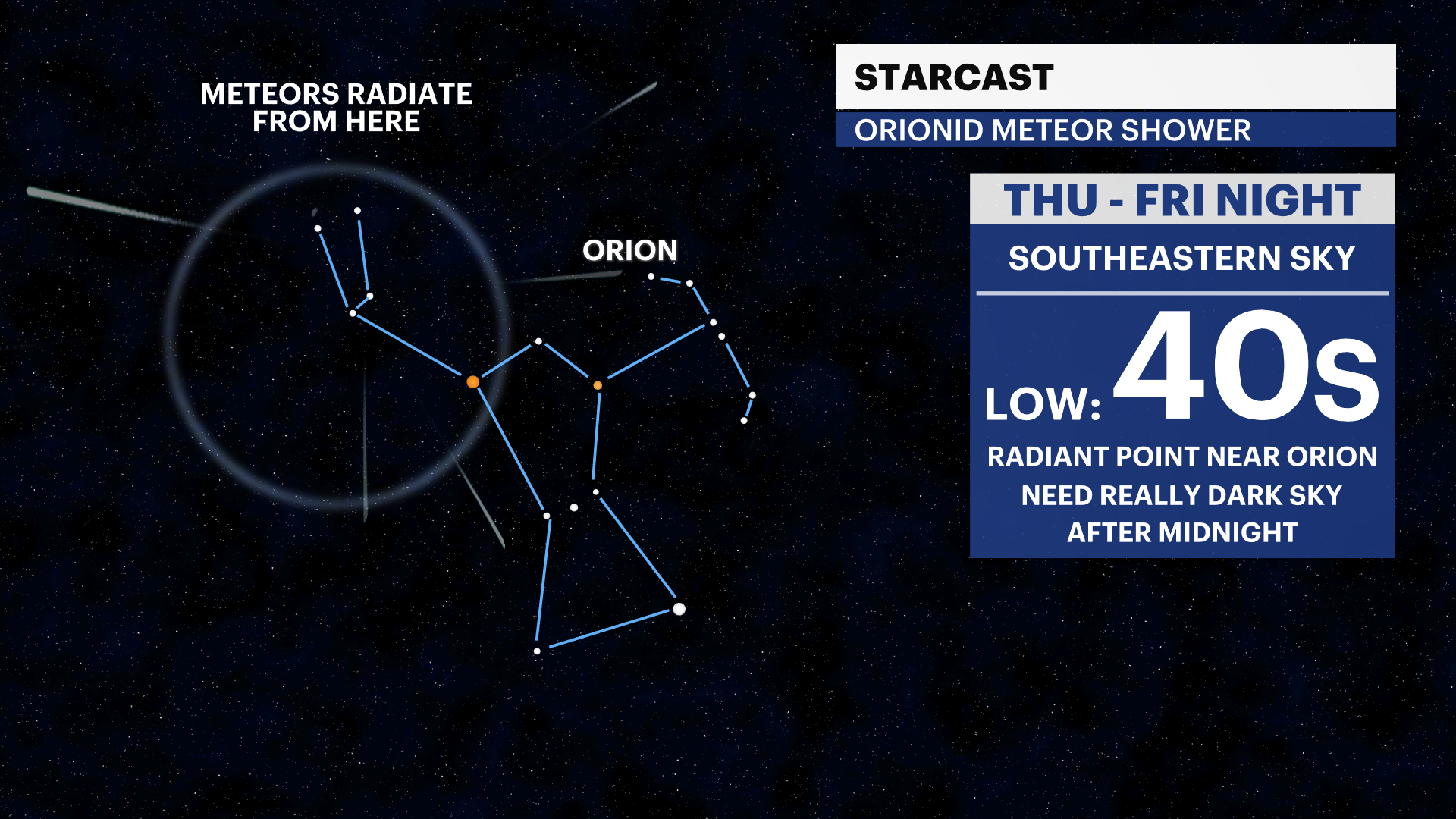More Stories
This week one of the most beautiful meteor showers of the year will grace our skies - the Orionids!
The Orionids are known for their brightness and speed, with meteors traveling 148,000 mph! They are called the Orionids, because they appear to radiate from a part of the sky near the constellation Orion. They are created when Earth travels through debris left from Halley’s Comet. Halley’s Comet is perhaps the most famous comet discovered by Edmond Halley, an English astronomer in 1758. It has some history and has been sighted for millennia. The last time the comet swung by the Earth was back in 1986. The next time it passes by will be in 2061.

If conditions are right, the peak averages around 15 meteors per hour. Perfect viewing conditions would be needed of course, away from the light pollution that plagues a lot of the tri-state area. One thing on our side will be the moon phase. The waning crescent moon will rise closer to 3 a.m. The shower peaks Thursday night into Friday, but meteors may be seen through the first week of November.

In order the see the meteor shower, find a really dark patch of sky and look up! You don’t have to look toward Orion to see them, meteors can appear almost anywhere. NASA recommends try to look about 45 to 90 degrees away from the actual radiant point. The streaks they leave behind will appear longer. Later in May, debris from Halley’s Comet will also produce the Eta Aquarids.

The best viewing time will be late and after midnight, because that’s when Orion is highest in the sky. If you are going out to view, dress warmly and bring some blankets or chairs.
More from News 12
2:20

Yorktown Highway Department ready to tackle overnight snow on the roads
2:33

Sadly, we will miss the peak of the Geminid meteor shower this year, but we'll get snow instead!
1:11

Are you hoping for a snowy Christmas this year?
1:22

Rockland businesses plan for higher utility bills due to cold snap, some plan for surge of customers

How to watch the last supermoon of the year tonight
1:42
